In this week’s Rocket Roundup, host Annie Wilson presents one Russian launch and Rocket Lab’s “They Go Up So Fast”. Plus, this week in rocket history, we look back at Voskhod 2, which launched from the Baikonur Cosmodrome in Kazakhstan on March 18, 1965.
Media
Transcript
Hello, and welcome to the Daily Space. My name is Annie Wilson and most weekdays the CosmoQuest team is here putting science in your brain.
Today, however, is for Rocket Roundup. Let’s get to it, shall we?
First up this week was the launch of CAS 500-1. On March 22 at 06:07 UTC, a Soyuz 2.1a/Fregat took off from pad 31-6 at the Baikonur Cosmodrome. It was very overcast that day, so the rocket disappeared into the clouds shortly after launch, and live footage was replaced by animation. The launch was conducted by GK Launch Services, a commercial company owned by Glavkosmos, which is itself a subsidiary of Roscosmos. This seemingly unusual setup allows Roscosmos to support commercial launches.
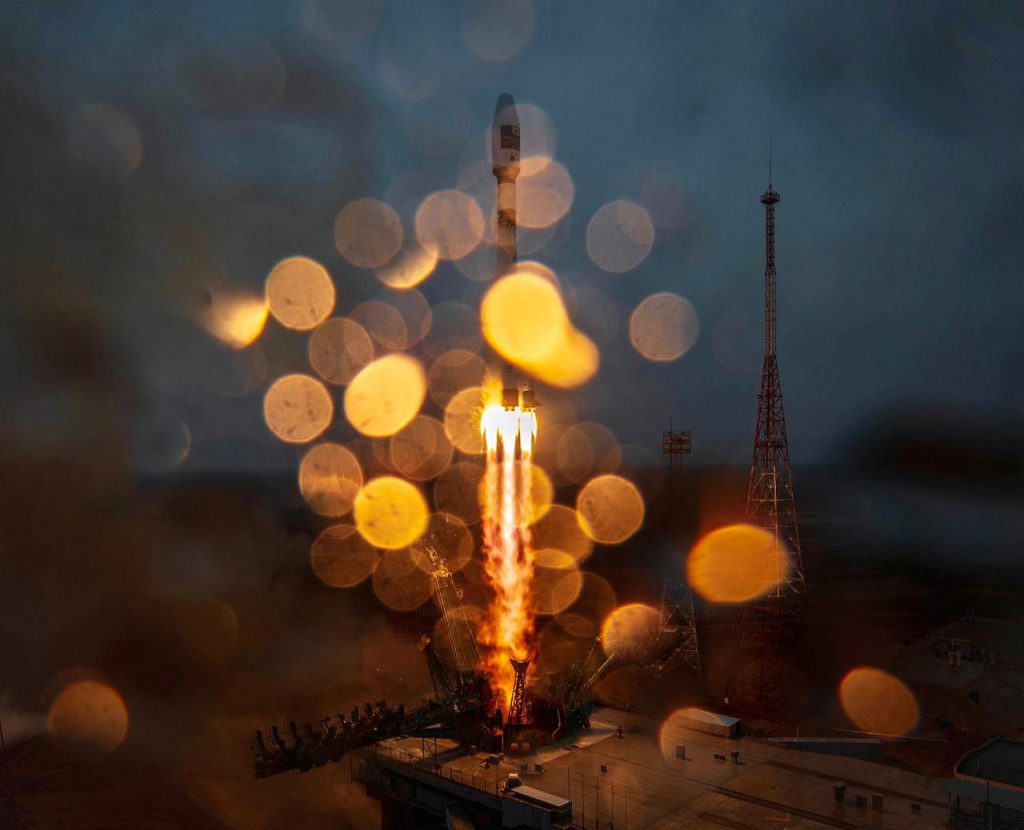
The rocket headed north into a 498 km Sun-synchronous orbit (SSO). This orbit is useful for imaging satellites like CAS 500 because it allows the spacecraft to pass over a location at the same solar time each day. As Sun-synchronous orbits increase in altitude, they also increase in inclination. A 500-kilometer SSO is inclined to around 97 degrees, which is very slightly retrograde. At their extreme, SSOs can be inclined to 142 degrees.
Before I talk about the payloads, I wanted to take a moment to point out the rocket’s paint job. Usually, GK Launch Services paint their rockets with an orange and grey color scheme. This time the Soyuz 2.1a was painted white and blue. Roscosmos shared that: [t]he inspiration for the new paintwork was the prototype of the Vostok launch vehicle, which is located at [the] VDNKh [Space Pavilion] in Moscow. It is painted white, and when launched, the rocket looks white from the frost covering the liquid oxygen tanks. On the Vostok launch vehicle 60 years ago, the first cosmonaut of the planet Yuri Gagarin went on a flight from the Baikonur cosmodrome.
On to the payloads! This 1,935th R7-derived Soyuz carried 38 satellites, ranging from 1U nanosatellite to 500 kilograms, to orbit. The missions are varied and include communications and technology demonstrations, space junk removal tests, imaging, and more.
The biggest satellite, CAS500-1, is the first of a pair of imaging satellites for Korea Aerospace Research Institute, the South Korean space agency. CAS500’s main imager, Advanced Earth Imaging Sensor System, will have a ground resolution of two meters in color mode and half a meter in panchromatic mode. It has a planned mission duration of four years.

I don’t have time to talk about all 37 of the smaller satellites, so the team and I picked out a few that looked interesting to us.
We get a lot of questions about space junk, so it definitely felt appropriate to talk about the ELSA-d Chaser/Target pair of satellites. These satellites were built by Astroscale, a Japanese company developing orbital debris removal satellites. They will demonstrate their system by first deploying the Target, which is equipped with a laser retroreflector and other systems. Then the Chaser will be deployed to rendezvous with the Target. The Chaser will conduct three increasingly complicated rendezvous maneuvers as the mission progresses.
One of our team members was really excited about the CubeSat Astronomy by NASA and Yonsei using the Vision ALignment Coronagraph program, also known as CANYVAL-C. CANYVAL-C is a two CubeSat mission designed to demonstrate that CubeSats can be used for solar astronomy. A 1U CubeSat named Timon is equipped with an optical camera for taking solar pictures. A 2U CubeSat named Pumbaa acts as a coronagraph, occulting the Sun, much like the Moon blocks the Sun during a total solar eclipse seen from the Earth. This allows the camera to only image the fine outer solar atmosphere. The two satellites were developed by Yonsei University in South Korea working with NASA.
Another interesting set of smallsats on the mission are the GRUS 1B, C, D, and E satellites. No, there’s no error with our counting; GRUS 1A was launched in 2018. These were a bit bigger, coming in at 100 kilograms each. They are Earth observation satellites that can obtain 2.5-meter ground resolution panchromatic images and 5-meter ground resolution multispectral images. The four satellites launched on the Soyuz mission will allow daily updates to Earth imagery.
Next up, at 22:30 UTC that same day, Rocket Lab launched their second Electron of 2021 from Launch Complex-1 on the Mahia Peninsula in New Zealand. They Go Up So Fast is the nineteenth launch overall of the Electron rocket and broke the 100-satellite milestone.
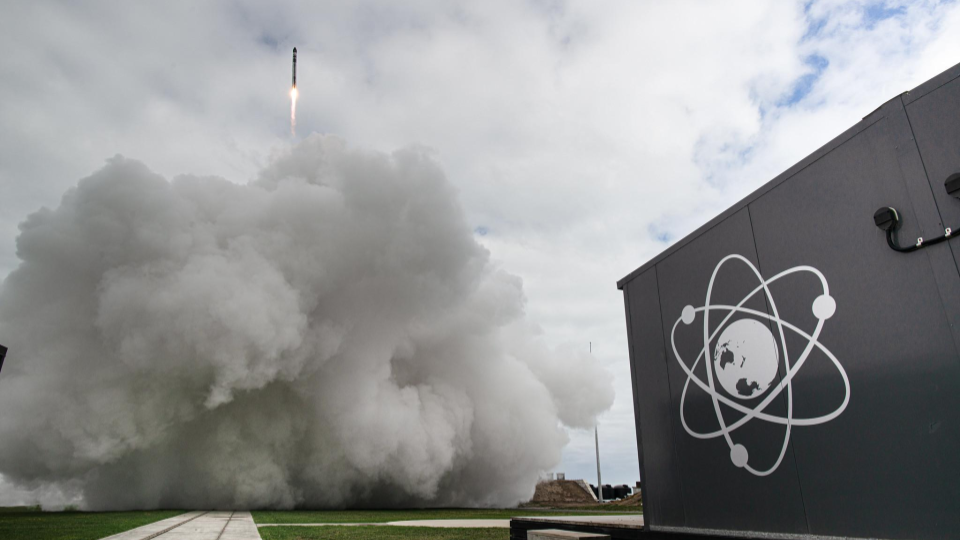
The Electron rose swiftly from the pad into relatively clear skies, and the onboard camera showed beautiful views of the Earth as the rocket gained altitude. This mission carried six customer satellites into orbit as well as the next iteration of the company’s Photon space tug.
The first customer satellite we’re going to talk about is BlackSky 7, one of the Block 2 satellites in the commercial imaging constellation of the same name, which is planned to have between thirty and sixty satellites when fully operational. They will be able to image a location as frequently as every 30 minutes day or night.
The BlackSky satellites have a ground resolution of about a meter from a 500-kilometer orbit, weigh 56 kilograms, and have sufficient propellant for an orbital life of three years. They are able to produce 1,000 images per day, in either single image or video mode.
This wasn’t the first time a BlackSky satellite had ridden on a Rocket Lab launch vehicle. BlackSky-2 and -3 both went to orbit on Electrons in June and August of 2019, respectively. Other members of the constellation have been sent to orbit on other launch vehicles over the last three years, including an Indian PSLV and several SpaceX Falcon 9’s.
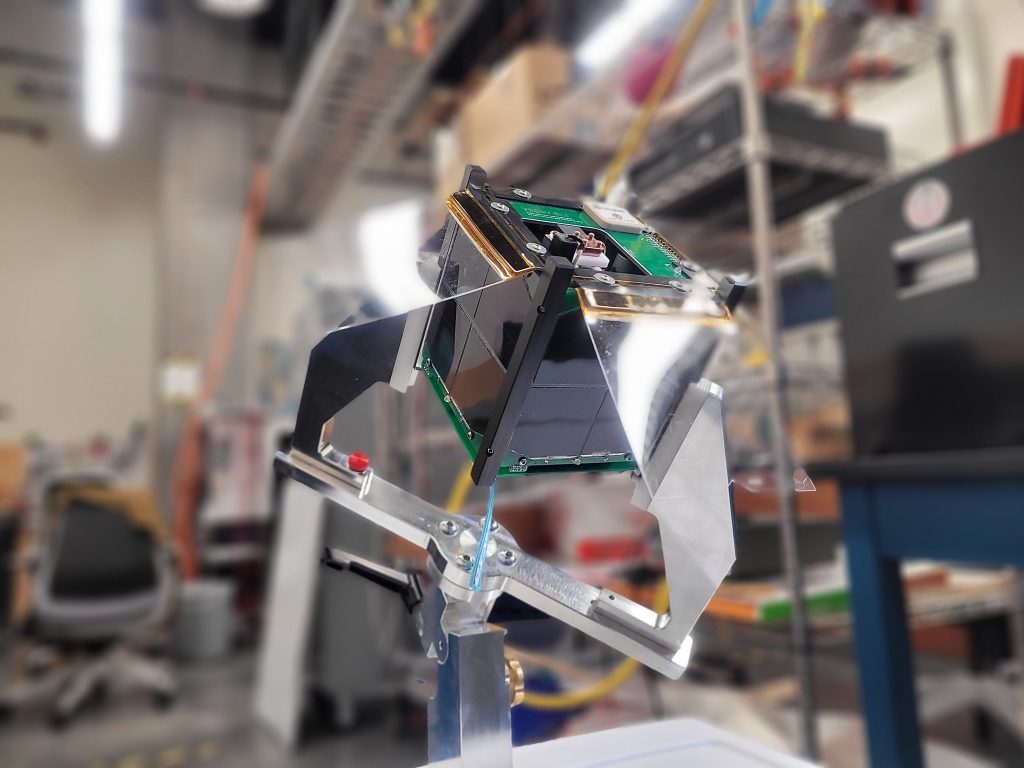
Another interesting satellite on the mission is the Hatchling Veery “Clay” satellite, a 1U CubeSat built by Care Weather Technologies in just three months. Hatchling Veery is the first test of Care Weather’s custom flight computer, batteries, solar panels, drag panels, three-axis reaction wheels, and structures. It is also the first spaceflight of the PPT3-1C integrated propulsion module made by Applied Ion Systems. The goal of the mission is to test all of these components so they did not include their weather sensor.
The mission duration is planned to be six months with an orbital life of 3.5 years. Initially, Hatchling Veery will be freely tumbling and will make contact with the Iridium network. It will perform a number of attitude control tests and periodically communicate data about the health of the satellite systems.
According to Care Weather’s website: Hatchling was developed by Alex Laraway, Patrick Walton, and Harris Rothaermel in a record-breaking three months. Hatchling is dedicated to Clay Reynolds, a good friend of Alex, who passed away in 2020.
Six months after the first Photon mission, “First Light”, Rocket Lab designated a second Photon and dubbed it “Pathstone”. During ascent, it performed its kick stage function. After delivering the customer payloads to their circular orbits, Pathstone continued on its own mission with different flight software. Rocket Lab CEO Peter Beck described this process as “sending a magic command”. Pathstone is an opportunity to test subsystems and procedures with Photon before the first flight of Interplanetary Photon, which will carry NASA’s CAPSTONE mission to lunar orbit later this year. CAPSTONE will be launched from Rocket Lab’s Launch Complex 2 at the Mid-Atlantic Regional Spaceport (MARS) in Virginia.
This Week in Rocket History
Last week on the show we told you about Vladimir Komarov’s mission aboard Voskhod 1. This week in rocket history, we have the follow-up mission: Voskhod 2. It launched from the Baikonur Cosmodrome in Kazakhstan on March 18, 1965, at 07:00 UTC.
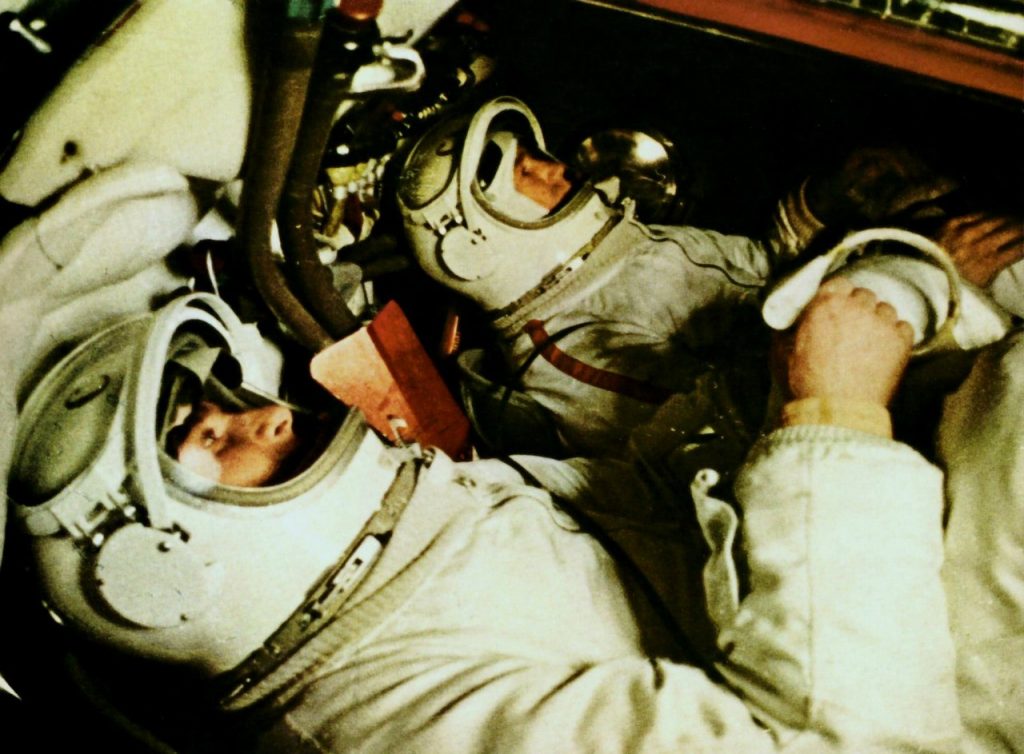
Commander Pavel Belyayev and pilot Aleksei Leonov rode the three-staged Voskhod launch vehicle to an orbit of 498 by 137 kilometers with an inclination of 65 degrees towards the equator.
The Voskhod 2 capsule was a modified version of the first Voskhod and had an inflatable Volga airlock attached to the main hatch. This meant that in the case of an emergency during takeoff or landing, the crew could not eject.
During their second orbit, Cosmonaut Belyayev deployed the airlock and extended it out into space. Cosmonaut Leonov then entered the airlock in his modified Vostok Sokol 1 flight suit and strapped himself to a bungee cord and an umbilicus which provided oxygen. Belyayev then closed the hatch from the inside of the capsule and started depressurizing the airlock. When the airlock’s pressure was equal to that of outer space, Leonov opened the outer hatch of the airlock and pushed himself out. At that moment, he became the first person in history to perform an Extra-Vehicular Activity in space, commonly known as a “Space Walk”.
The spacewalk lasted over 10 minutes, during which Leonov reported seeing the stretch of Earth from the straits of Gibraltar to the Caspian Sea. When the time came to re-enter the capsule, Leonov realized he had a problem: his spacesuit was deformed due to its internal pressure pushing out against the vacuum of space. He could barely move and his feet and hands were no longer firmly secure in his boots and gloves. He had no way to pull himself back into the airlock.
Not wanting to cause alarm on the ground, he decided not to report on his condition. Leonov realized that he could lower the pressure by slowly releasing the trapped oxygen by opening a specialized valve installed in his suit. As the oxygen left his suit, he gradually regained a bit of flexibility – just enough to be able to pull himself back in and close the airlock’s outer hatch.
With Leonov safe onboard, the issues continued for the daring cosmonauts. Just as they were preparing for their deorbit burn, Leonov reported that their reentry guidance system (the system responsible for guiding their descent back into the atmosphere) was not functioning at all, and they had to rely on manual piloting for the extremely risky maneuver.
Leonov recalled that the next call from mission control, which had Cosmonaut Yuri Gagarin on the line, asked them where they landed. They hadn’t even re-entered the atmosphere, yet. It seemed that mission control had no idea what was going on. Belyayev informed them of their situation, and the crew started to prepare for re-entry.
Belyayev was responsible for orienting the craft into the correct angle for re-entry, while Leonov had to calculate where they would land as a function of when they fired their engines. Leonov had to choose a location that was in the Soviet Union, sparsely populated so bystanders weren’t in harm’s way, but also not completely desolate so they could be rescued in a reasonable amount of time in case his calculations were off.
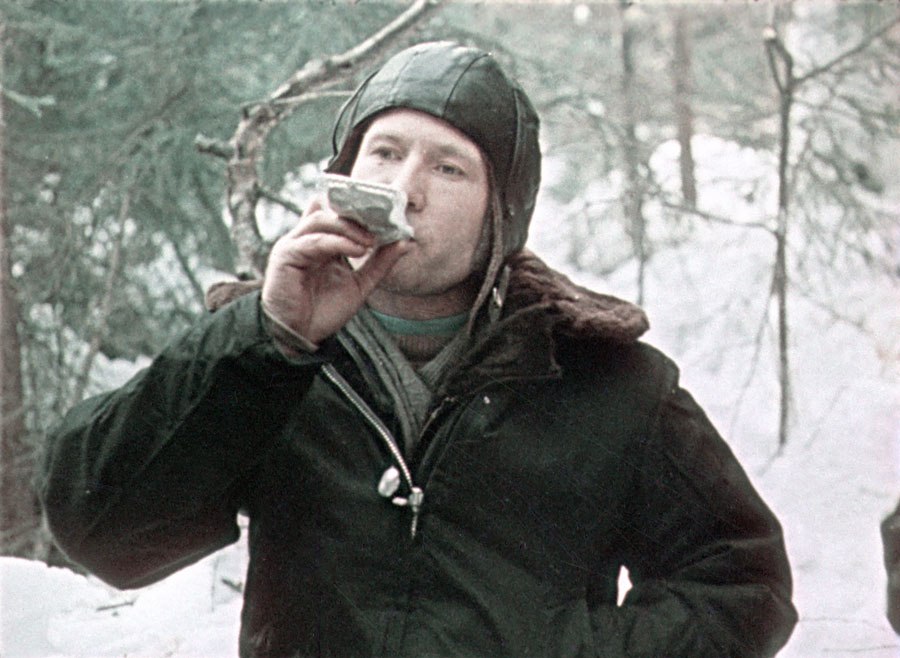
He aimed for the city of Perm, and at the appropriate time, Belyayev fired the retro engines for ten seconds and then separated from the capsule’s orbital module.
Still, as Leonov wrote in an article for the Air & Space Magazine, “[s]omething felt very wrong”. As they entered the atmosphere, they felt way more drag than they had anticipated. After a while, they started feeling intense gravitational forces, with Leonov reporting his instruments measured as much as ten gees. He looked out his window and saw that they were spinning rapidly. One of the cables attached to the orbital module did not separate correctly, so they were dragging it along with them into the atmosphere. This caused their center of mass to shift enough for the capsule and its attached baggage to tumble and spin.
Eventually, the cable burnt up and broke, and at an altitude of about 100 kilometers, the craft stabilized. Everything else during landing worked nominally, with the drogue parachutes and the landing parachutes opening just when they should have, and eventually, the retro-rocket designed to slow them down fired, and they made a safe landing just 2000 kilometers outside of Perm in Siberia. Remember, Leonov was aiming for Perm, not the wilderness 2000 kilometers outside of it.
The area they landed in was extremely hard to get to, had harsh weather, and was known to be home to wild bears and wolves. What’s worse, they weren’t even sure that ground control knew where they landed. After a couple of hours, they were spotted by a civilian cargo plane, who informed some local pilots. A rescue mission was arranged using a helicopter, but the forested terrain the cosmonauts were in made it impossible to land. The helicopter also tried pulling them up with an improvised rope ladder, but their spacesuits were too heavy and got caught in the thick trees.
The civilians did everything they could to help, including dropping them a bottle of Cognac (which broke) and an ax, but it was getting dark and extremely cold. The stranded cosmonauts pulled the capsules’ parachutes over the capsule as means of insulation, got back into the capsule, and went to sleep.
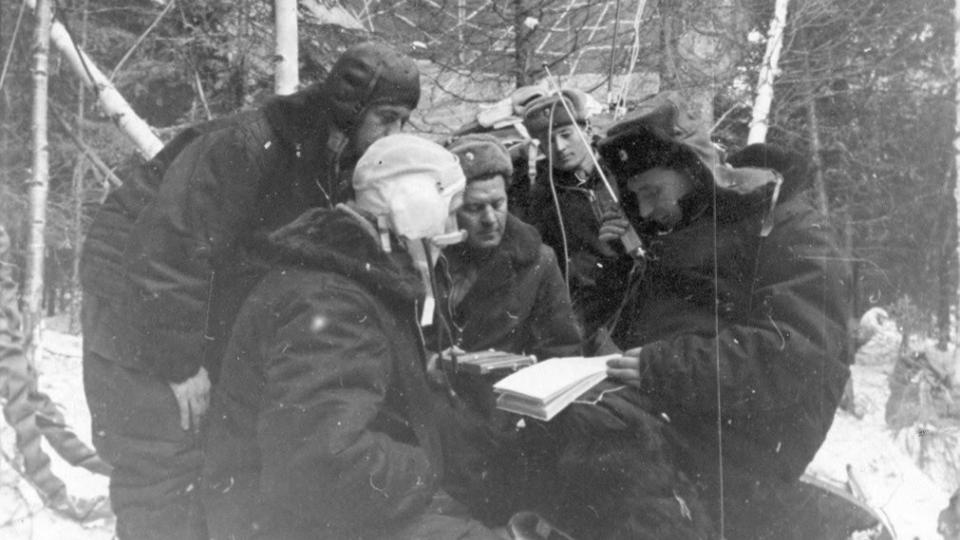
The next morning they were met by a rescue party, who were led there by the local pilots who had seen them the day before. The rescue party included a fellow cosmonaut, two doctors, and a film crew, but the stranded cosmonauts were still in no condition to get back to the city by themselves. The rescue party made sure that the cosmonauts were warm, safe, and fed until the next morning when they found a clearing in the forest large enough for a helicopter to land – some nine kilometers away – from which they were finally picked up.
As a final note – the source for most of this story is the aforementioned article written by Leonov himself in Air & Space Magazine, which will be included in the show notes, and is a fascinating and recommended read.
Statistics
To wrap things up, here’s a running tally of a few spaceflight statistics for the current year:
Estimated number of toilets currently in space: 5: 3 installed on ISS, 1 on the Crew Dragon, 1 on the Soyuz. We are still looking into getting an official number.
Total 2021 orbital launch attempts: 24, including 1 failure
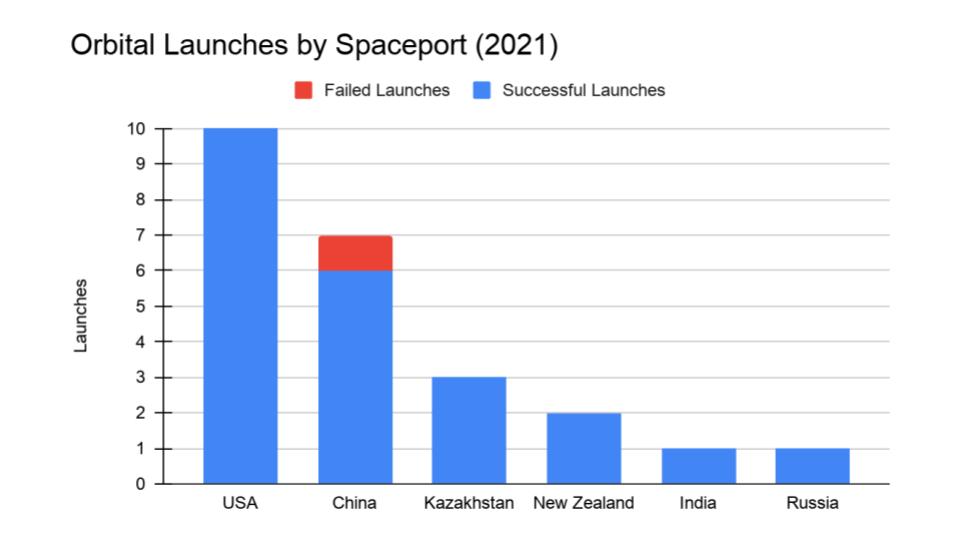
Total satellites from launches: 593
I keep track of orbital launches by where they launched from, also known as spaceport. Here’s that breakdown:
USA: 10
China: 7
Kazakhstan: 3
New Zealand: 2
India: 1
Russia: 1
Random Space Fact
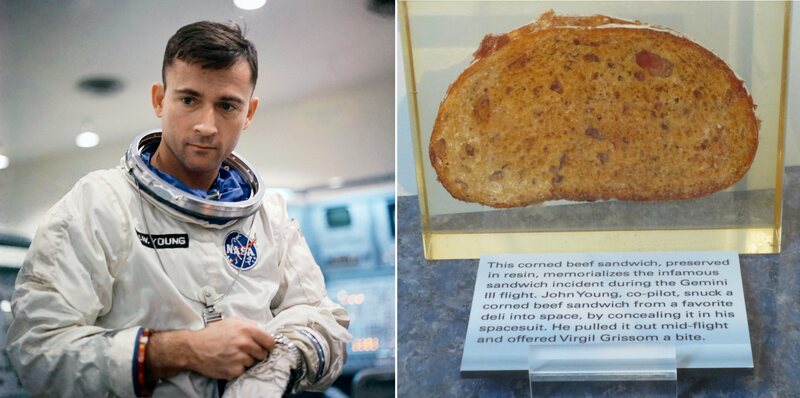
Your random space fact for today is that John Young smuggled a corned beef sandwich in his spacesuit on the Gemini 3 mission, 56 years ago this week. Gemini 3 was the first crewed mission of the Gemini program, NASA’s rapid development of rendezvous and docking capability. During the flight, astronaut Young took the sandwich out of his pocket and took a bite. “Crumbs of rye bread started floating around the cabin,” he said. Small particles could cause a hazard to the spacecraft’s components, so he put the sandwich away. A few years later John Young brought some corned beef onto a shuttle flight he commanded, with permission. Nowadays, they have officially sanctioned sandwiches on the ISS, but they mostly use tortillas because those have a lower risk of crumbs.
This has been the Daily Space.
Learn More
CAS500-1 Launches Aboard Soyuz From Kazakhstan
- Roscosmos press release (Russian)
- GK Launch Services press release
- Roscosmos press release (Russian)
- CAS500 info page (KARI)
- CAS500 info page (Gunter’s Space Page)
- Roscosmos press release (Russian)
- ELSA-d info page (Gunter’s Space Page)
- CANYVAL-C info page (Gunter’s Space Page)
- GRUS info page (Gunter’s Space Page)
- GRUS info page (Axelspace)
- Launch video
Rocket Lab’s Latest Launch, They Go Up So Fast, Breaks Milestone
- Rocket Lab press release
- BlackSky constellation info page (Gunter’s Space Page)
- BlackSky press release (pdf)
- Hatchling Veery “Clay” info page (Care Weather)
- Pathstone info page (Gunter’s Space Page)
- Launch video
This Week in Rocket History: Voskhod 2
- Launch of Voskhod-2 (Russian Space Web)
- The Nightmare of Voskhod 2 (Air & Space Magazine)
Random Space Fact: Corned Beef Sandwich Smuggled Into Space
- How an Astronaut Smuggled a Sandwich Into Space (Smithsonian National Air and Space Museum)
Credits
Host: Annie Wilson
Writers: Elad Avron, Dave Ballard, Gordon Dewis, Pamela Gay, Beth Johnson, Erik Madaus, Ally Pelphrey, and Annie Wilson
Audio and Video Editing: Ally Pelphrey
Content Editing: Beth Johnson
Executive Producer: Pamela Gay
Intro and Outro music by Kevin MacLeod, https://incompetech.com/music/


 We record most shows live, on Twitch. Follow us today to get alerts when we go live.
We record most shows live, on Twitch. Follow us today to get alerts when we go live.